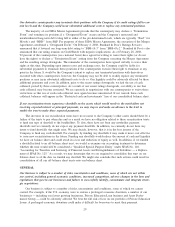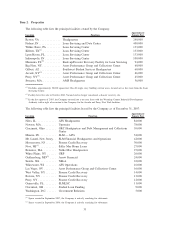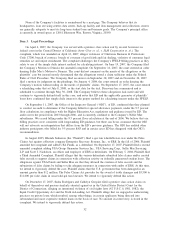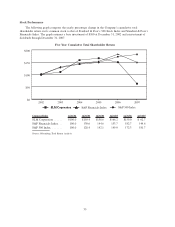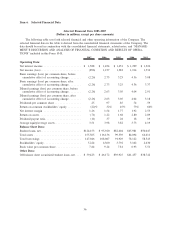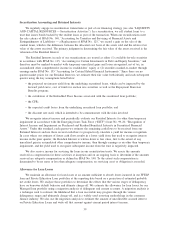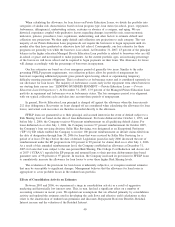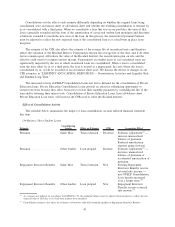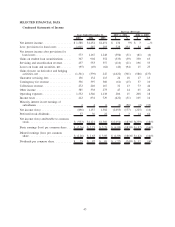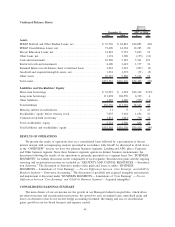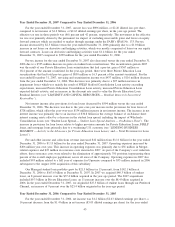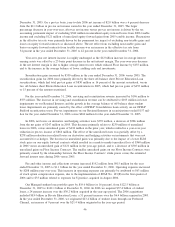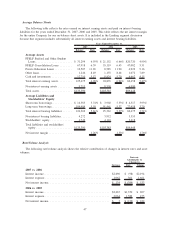Sallie Mae 2007 Annual Report Download - page 39
Download and view the complete annual report
Please find page 39 of the 2007 Sallie Mae annual report below. You can navigate through the pages in the report by either clicking on the pages listed below, or by using the keyword search tool below to find specific information within the annual report.We manage our business through two primary operating segments: the Lending operating segment and the
APG operating segment. Accordingly, the results of operations of the Company’s Lending and APG operating
segments are presented separately below under “BUSINESS SEGMENTS.” These operating segments are
considered reportable segments under the Financial Accounting Standards Board’s (“FASB”) Statement of
Financial Accounting Standards (“SFAS”) No. 131, “Disclosures about Segments of an Enterprise and Related
Information,” based on quantitative thresholds applied to the Company’s financial statements.
CRITICAL ACCOUNTING POLICIES AND ESTIMATES
Management’s Discussion and Analysis of Financial Condition and Results of Operations addresses our
consolidated financial statements, which have been prepared in accordance with generally accepted accounting
principles in the United States of America (“GAAP”). The preparation of these financial statements requires
management to make estimates and assumptions that affect the reported amounts of assets and liabilities and
the reported amounts of income and expenses during the reporting periods. We base our estimates and
judgments on historical experience and on various other factors that we believe are reasonable under the
circumstances. Actual results may differ from these estimates under varying assumptions or conditions. Note 2
to the consolidated financial statements, “Significant Accounting Policies,” includes a summary of the
significant accounting policies and methods used in the preparation of our consolidated financial statements.
On a quarterly basis, management evaluates its estimates, particularly those that include the most difficult,
subjective or complex judgments and are often about matters that are inherently uncertain. These estimates
relate to the following accounting policies that are discussed in more detail below: application of the effective
interest method for loans (premiums, discounts and Repayment Borrower Benefits), securitization accounting
and Retained Interests, allowance for loan losses, and derivative accounting. In recent years, we have
frequently updated a number of estimates to account for the continued high level of FFELP Consolidation
Loan activity. Also, a number of these estimates affect life-of-loan calculations. Since our student loans have
long average lives, the cumulative effect of relatively small changes in estimates can be material.
Premiums, Discounts and Repayment Borrower Benefits
For both federally insured and Private Education Loans, we account for premiums paid, discounts
received, capitalized direct origination costs incurred on the origination of student loans, and the impact of
Repayment Borrower Benefits in accordance with SFAS No. 91, “Accounting for Nonrefundable Fees and
Costs Associated with Originating or Acquiring Loans and Initial Direct Costs of Leases.” The unamortized
portion of the premiums and the discounts is included in the carrying value of the student loans on the
consolidated balance sheet. We recognize income on our student loan portfolio based on the expected yield of
the student loan after giving effect to the amortization of purchase premiums and accretion of student loan
discounts, as well as the impact of Repayment Borrower Benefits. Premiums, capitalized direct origination
costs and discounts received are amortized over the estimated life of the loan, which includes an estimate of
prepayment speeds. Estimates for future prepayments are incorporated in an estimated Constant Prepayment
Rate (“CPR”), which is primarily based upon the historical prepayments due to consolidation and defaults,
extensions from the utilization of forbearance, as well as, management’s expectation of future prepayments
and extensions. For Repayment Borrower Benefits, the estimates of their effect on student loan yield are based
on analyses of historical payment behavior of borrowers who are eligible for the incentives, and the evaluation
of the ultimate qualification rate for these incentives. We periodically evaluate the assumptions used to
estimate the loan life and qualification rates, and in instances where there are modifications to the assumptions,
amortization is adjusted on a cumulative basis to reflect the change.
The estimate of the CPR measures the rate at which loans in the portfolio pay before their stated maturity.
A number of factors can affect the CPR estimate such as the rate of consolidation activity and default rates.
Changes in CPR estimates are discussed in more detail below. The impact of Repayment Borrower Benefits is
dependent on the estimate of the number of borrowers who will eventually qualify for these benefits. For
competitive purposes, we occasionally change Repayment Borrower Benefits programs in both amount and
qualification factors. These programmatic changes are reflected in the estimate of the Repayment Borrower
Benefits discount when made.
38



